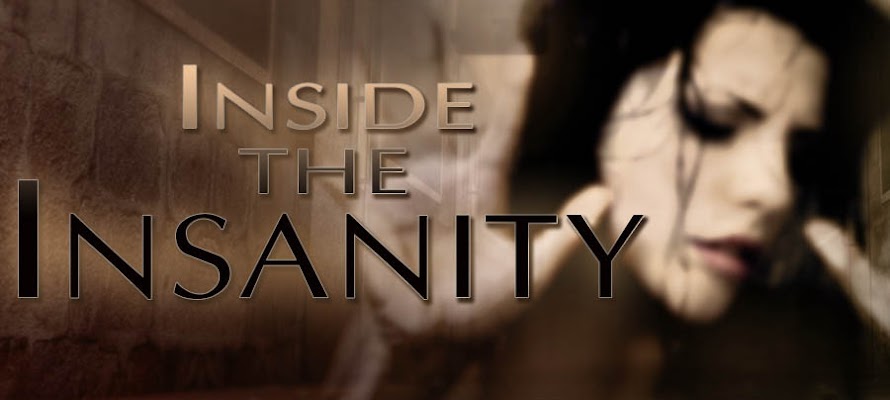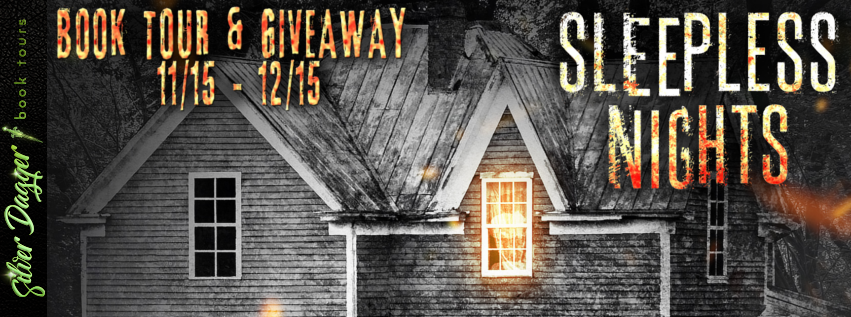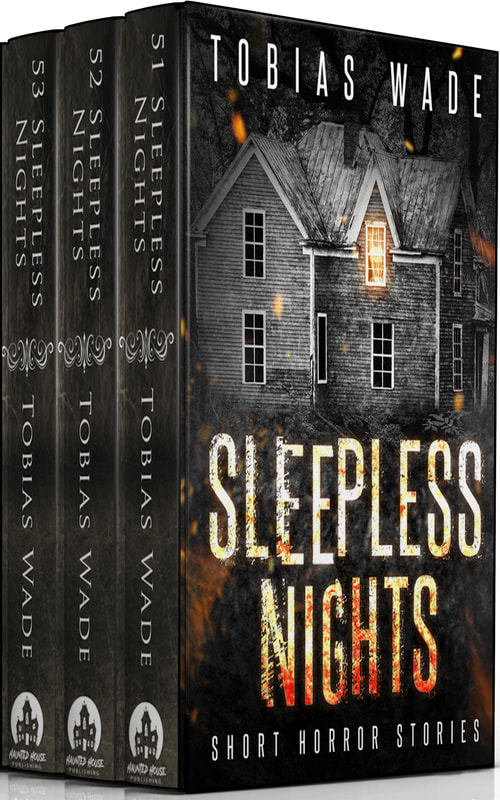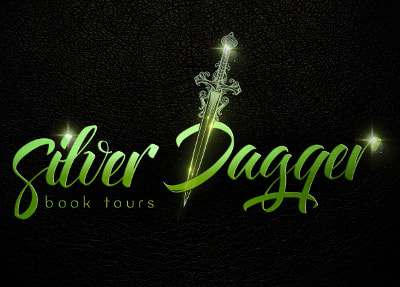Sleepless Nights
168 Horror, Mystery, Thriller, and Suspense Short Stories
by Tobias Wade
Publisher: Haunted House Publishing LLC
Publication Date: February 1, 2019
The news said 33 miners were trapped when the mine collapsed.
And why wouldn’t they? 33 people were pulled out of the ground.
The men were buried 700 meters below the surface. There was no way in or out.
But the miners who were rescued all said the same thing:
They said there were only 32 miners during the cave in. That they counted and they counted—every day
—every few hours to make sure everyone was taken care of.
Then one day they count again, and there were 33. A stranger was in their midst.
Something escaped from the earth during that rescue that never should have seen the light of
day.
Demons, monsters, psychopaths, undead, mad-experiments, and terrifying paranormal encounters.
The last confession from a serial killer will take your breath away.
Why should you be afraid to leave an audio-recorder on overnight?
What could go wrong if you meet the Devil on Tinder?
Why does your reflection smile more than you do?
The Grim Reaper's scythe isn't to harvest you. He's there to protect you from what's waiting on the other side.
What could go wrong if you meet the Devil on Tinder?
Why does your reflection smile more than you do?
The Grim Reaper's scythe isn't to harvest you. He's there to protect you from what's waiting on the other side.
Early readers are saying:
"As a huge horror nut I love being freaked out of my mind, being taken for a dark spin, and then being left
with goosebumps dotted on my skin."
★★★★★ Review
"From the first story to the last, this book was enjoyable in that spine-tingling kind of way. It’s been a very
long time since I’ve read anything that has wormed its way into my brain and had me thinking about it
hours or days later."
★★★★★ Review
"I swear there isn't a clunker on here. You'd think even a solid compilation would have one or two lame
ducks, but every last story in here is thrilling and terrifying and fantastic."
★★★★★ Review
Fast, exciting, satisfying stories, filled with compelling mysteries and shocking twists.
Mega-collection with 168 chilling stories, over 700 pages include Amazon-Bestselling Collections 51,
52, and 53 Sleepless Nights, as well as 12 bonus tales from Brutal Bedtime Stories.
Easy to fit in a story during the day, or to keep you awake all night long.
Grab a copy now.
Former neuroscience researcher, born again horror writer. During my studies, it struck me as odd that I
could learn so much about why humans behave without understanding the intricacies of human nature. It
occurred to me that I learned more about the depths of human experience from reading Dostoyevsky
than I ever had from my text books, and I was inspired to write.
Download my horror collection for free and see all my publications at:
GUEST POST
4
Things That Every Horror Story Needs
I’ve
written over 100 stories, and it’s impossible to do that
without noticing trends about what works and what doesn’t. Whether
you’re new to writing horror or just burnt out and need a framework
to help construct your next idea, I recommend writing down these four
steps before you start every story.
1)
Mystery.
The
internet is a big place and ain’t nobody got time for that.
You
want to grip your reader within the first paragraph, and I think the
best (easiest) way to do that is by putting a burning question in
their mind that begs an answer.
“Is
this real?”
“What happened next?”
“Why would someone
write a story about that?”
“How could someone survive
to write about it?”
These
are the kind of questions that force people to read all the way to
the end. I love whimsical language and character exploration as much
as the next, but if you read the beginning of your story in isolation
without needingto
know something that will come next, then it’s time to edit.
2)
Suspense.
What
happens when you put the suspense before the mystery? A lot of
boring, out of context exposition.
Once
you’ve given your reader a taste of what they want, experiment with
how long you can avoid
giving it to them.
Now that you have their attention, you can slow down to develop your
characters and give background information on the scenario. Suspense
is the anticipation of what will happen next, and the excitement of
that anticipation can be just as good or better than the reveal
itself.
(For
example: one
of my stories spends the
entire time making the reader wonder what the scariest imaginable
drawing could be without ever revealing it, as nothing explicit could
be as scary as the infinite potential of the unknown).
Slow
down too much however, and suddenly you’re Naruto’s 4th cousin
having an elaborate love affair (filler much?) and readers will get
bored. You want to continue to develop your main plot and reference
the mystery as you explore the other elements of your story.
Your
suspense will increase in effect the closer you draw to your climax
as the reader’s need for resolution grows. Dedicating a paragraph
to a guy walking home can get tedious, but when the reader knows a
monster is waiting for him the second he walks in the door, every
step of the
exact same paragraph
will be an adventure. His hand on the doorknob. His baited breath.
The creak of the wood. These are all boring without the anticipation
(suspense) of what’s inside.
3)
Climax.
Urgency.
Action. The big reveal.
Here’s
where you find out what the monster is or see the serial killer take
another life. You’ve used up all your pondering and fancy getting
here, and now you want the reader on the edge of their seat. Short,
fast, action-packed sentences are ideal for this. Add more action to
your descriptions and dialogue as well. If you want to tell readers
there’s an apple on the table, have someone pick it up or toss it
from hand to hand instead of just noticing it. Add action to
dialogue, making characters advance or retreat or exchange blows
between words.
Present
tense adds the most immediacy to the situation. Cut down all filer
words, unnecessary descriptions, and even excess grammar that slows
you down.
Instead
of “I
noticed the cat stand up“,
say “The cat is standing”. Instead of “I
immediately decided to turn around and sprint back through the
hallways until I got back outside,”
say “I turn, sprinting. The hallway, the door, and finally the
clear night air.”
4)
Twist.
And
I would have gotten away with it if it wasn’t for you meddling
kids.
Readers
are smarter than you give them credit for. Remember they want their
question answered so bad that they’re trying to cheat by guessing
what will happen the whole way through. A clue as small as a
shifty-eyed glance can turn the big reveal into a “huh, I figured.”
See if you can’t throw a little twist in at the end that gives
context to the rest of the piece.
Maybe
the narrator is actually the killer all along, or maybe the killer
has a secret benevolent motivation. A twist doesn’t even need to
change the main plot. It can be something as simple as a coward dying
with dignity. The goal is to simply give the reader a feeling of
satisfaction, making him glad that he read all the way to the end to
see something he hasn’t already anticipated.
I
use these four phases of the story as bullet points when I’m
outlining, then I begin writing once I have a little blurb for each.
Some stories will put the mystery in the title, build suspense the
whole time, and then have the climax and the twist together in one
sentence. Some will be all climax, action-action-action, with the
twist another amazing actiony-action. There are infinite variations
to allow the same structure to produce endless unique stories, but
however you decide to break the rules, keeping these in mind will
always help putting your ideas on paper
As
you continue to practice, you’ll notice this structure can apply to
smaller increments like paragraphs or even sentences. Hook the
character on the first sentence (or word!) and repeat the rise and
fall of suspense/resolution, each little cycle adding another puzzle
piece to the main situation at stake.
An
Example in Action:
I
want to write a horror story.
1)
Pick a topic. How about a good old-fashioned zombie story?
2) Write
down the steps: Mystery, Suspense, Climax, Twist.
3) Ask yourself
questions until you can fill in each step.
What
could be mysterious about a zombie story? How about their origin? I’m
going to start writing about these zombies showing up, but there
haven’t been any undisturbed graves or missing bodies to produce
them. Who are these guys anyway?
What
suspense can I have? How about a little boy trying to get people to
believe him? He keeps seeing these things, but he’s an unreliable
witness so no-one takes him seriously. Suspense builds as the zombies
keep getting closer/do worse things, and anticipation builds as the
reader can’t wait for people to find out the truth.
Climax?
Well someone has to find out eventually. Maybe the boy catches a
zombie and lures it into his basement. His mom sees it and finally
believes him. Then the zombie breaks out and they follow it back to a
secret government lab. No wonder the police never reported any
missing bodies!
Twist?
What if the zombies were helpless victims just trying to get away
from the experiment? And the little boy made friends with one and
helps it escape to live in the woods?
4)
Write that story!
Follow the tour HERE for special content and a giveaway!








Hi Tobias! Thanks for stopping by and providing some useful tips in writing horror. I agree that you need to hook the reader from the start and give a twist.
ReplyDelete